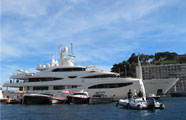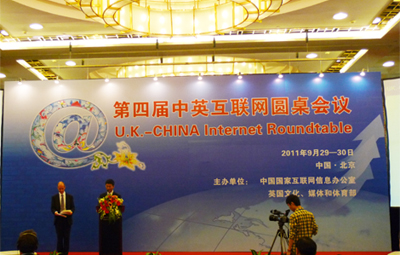Rising incomes will be the driver
Updated: 2011-09-30 09:16
By Andrew Moody (China Daily)
|
|||||||||
|
Chris Yoshii, vice-president of consultancy AECOM, says theme park attendance in China will exceed that of the US within 10 years. Edmond Tang / China Daily |
Shanghai Disney project will set the benchmark for operations, says industry specialist
Americans may have invented Mickey Mouse but the Chinese could be biggest theme park-goers in the world by the end of the decade, according to a new forecast by a leading leisure industry specialist.
The number of Chinese attending theme parks is expected to reach 221 million by 2020 - just above last year's US attendance level of 220 million - and by 2030 visitor numbers could be 423 million.
Chris Yoshii, global director of economics and vice-president of US-based consultancy group AECOM, which produced the statistics, says he expects theme park attendance in China to exceed that of the United States within 10 years.
"We expect the market to double within the next five years and nearly double again by 2020. China will then have larger visitor numbers than the US," he says.
But while China will have surpassed visitor numbers some 65 years after Disney opened its first theme park in Anaheim, California in 1955, the China market will still have vast untapped potential.
Around 70 percent of Americans who have the financial means to visit a theme park currently do so, whereas in China only one in 10 who could afford it in 2010 went through the entry gates, according to AECOM.
When visitor numbers in China rise to 423 million in 2030, visitor numbers will still represent only 31 percent of the 1.32 billion people who by then will have the financial means to do so. "So even after 2030, there is potential for much more growth in the market as the attendance rate in China climbs up to American levels," adds Yoshii.
He says the Chinese are also having a big effect on theme park expansion in Asia with the number of tourists boosting visitor numbers across the region. "We have seen a particularly big impact from Chinese tourists on the South Korean market with visitor numbers up at parks such as Everland and Lotte World. Some of the surge has been fueled by the change in China visa policies.
"Chinese mainland visitors are also one of the big driving forces behind theme parks in Hong Kong such as Disneyland and Ocean Park."
Yoshii, who is American and based in Hong Kong, has worked as an economist for 25 years and is one of the world's leading experts on theme park development. One of his major focuses at AECOM, which has 50,000 employees worldwide, is the leisure industry and he has worked for major clients on a number of projects in China and across Asia.
He says many of China's most successful parks are based around the major urban areas such as in Beijing, Shanghai, Guangzhou and Shenzhen. "Average annual visitations are generally below 2 to 2.5 million although major parks could see attendance beyond 3 million, with group tours and domestic visitors in China forming a significant part of the visitation," he says.
Yoshii sees the development of the Shanghai Disney Resort, scheduled to open in 2016, as being a major staging post in theme park development in China. "I think it will be a watershed event. It is really going to set the standard for theme park construction, operations and management.
"It will be setting a benchmark. It is not as if everyone will have to reach the same standard but if they fall well below those standards people won't go. There will be a quality and price umbrella from then on under which everyone will have to sit."
Yoshii says the Chinese government's moves to clamp down on theme park development with the National Development and Reform Commission placing a ban in August on projects of more than 20 hectares or more than 500 million yuan (58 million euros), may not slow down development.
"There is a similar regulation surrounding golf courses and there has been a lot of golf courses built since the regulations came in. They call them outdoor recreation gardens and things like that.
"There is certainly some nervousness about it but when you talk to local developers they say they will get round it. I think the government is concerned about local governments taking loans to finance these projects."
Yoshii says theme parks in China and in the rest of the world remain high-risk projects with substantial capital outlay and uncertain financial returns. "Theme parks as an asset class are a fairly high risk investment compared to an office building, hotel or shopping center. You are faced with the prospect it might not work. They have a long payback period and a relatively low rate of return. They require patient equity and longer-term debt.
"That is why you see so many developments with a residential and commercial property aspects. Theme parks can on an operational level be very profitable but the capital costs are also quite high."
Theme parks also require continuous reinvestment. They often need a major facelift every three to five years so that customers are encouraged to make repeat visits. According to Yoshii this extra capital investment is between 3 and 7 percent of a park's revenue.
Yoshii says it makes a theme park investment very different from that of a hotel, whose facilities would not need a major upgrade in such a short time frame.
"A lot of parks work on the basis of a three-year cycle. On top of that, they also try to do something new every year in terms of a news show or a seasonal event."
One of the major problems for China theme parks has been their inability to make money out of customers they attract to their facilities. In the United States, 50 percent of revenues are derived from expenditure on buying souvenirs, merchandise, food and other items, the same as from the admission ticket sales. In China, some 80 percent of revenues come from admission and just 20 percent from expenditure on site.
"The Chinese are not used to buying souvenirs and at a lot of theme parks the merchandise and the food they are being offered is not very good quality.
"That is changing. We have been working a lot with Ocean Park in Hong Kong and they are putting a lot of investment into the restaurants and retail offer. Anything you can do to increase spending in the park goes right on to the bottom line."
Yoshii says one of the drivers for growth of the China theme park market over the next two decades will be rising income levels in rural parts of the country. Currently, only about 16 percent of China's rural residents meet the income qualification associated with people attending theme parks but this is expected to rise steeply to 92 percent by 2031. This will significantly narrow the current gap between them and urban residents. Today just over 70 percent of urban residents meet the income qualification and that is expected to rise to 96 percent by 2031.
"Rising income levels in rural areas will increase the size of the potential market in China. Although income levels in rural parts of the country will remain lower than in urban areas, the income qualified stage is quickly catching up," he says.











